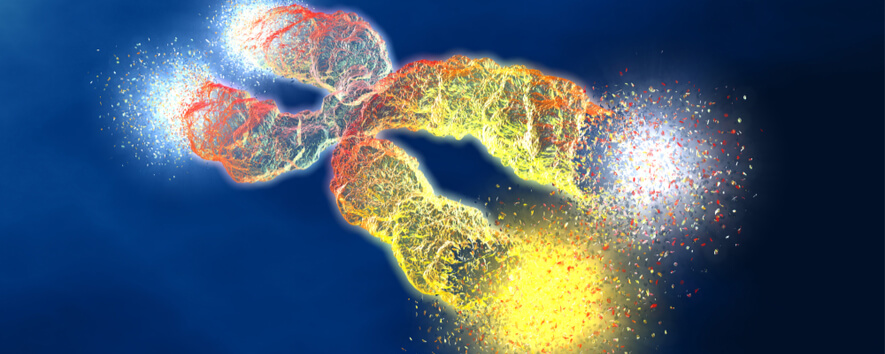
To gain an infinite lifespan, cancer cells need to maintain the ends of their chromosomes, known as telomeres.
They achieve this in various different ways.
Scientists from the German Cancer Research Center systematically investigated more than 2,500 tumour genomes of 36 types of cancer to find out how these mechanisms are manifest in changes in the DNA.
Active lengthening of the telomeres is one of the hallmarks of all cancer cells and hence an important focus in developing targeted treatments.
The study, published in Nature, is part of the Pan-Cancer Analysis of Whole Genomes (PCAWG).
Healthy body cells have a natural expiry date defined by the length of their telomeres.
Telomeres are part of DNA and protect the end of the chromosomes.
They become shorter each time the cell divides, however, until a minimum length is reached – the telomere has then been used up so to speak.
Stem cells are the only type of cells to produce the ‘immortality enzyme’ telomerase, which can lengthen the telomeres again.
All other cells stop dividing after around 50 cycles.
Cancer cells depend on intact telomeres for unlimited cell division.
Earlier studies showed that around 85 percent of all tumours upregulate telomerase via different mechanisms.
The remaining tumours use alternative mechanisms to lengthen telomeres.
A team of researchers led by Lars Feuerbach from the German Cancer Research Center (DKFZ) studied more than 2,500 tumour samples to gain a better understanding of these mechanisms, in particular those that have not been well researched to date.
The study is part of the Pan-Cancer Analysis of Whole Genomes (PCAWG).
The PCAWG researchers found DNA mutations that point to one of the two known mechanisms of telomere lengthening in only 13 percent of the cases studied.
As lead author Lina Sieverling explained, “In the vast majority of the 2,500 cancer cases studied, we observed increased activity of the telomerase gene but without any changes in the genome that could explain this. Epigenetic factors that do not leave any trace in the genome might be partly responsible here.”
Of the 13 percent of those tumours whose DNA showed indications of telomere lengthening, only 64 cases pointed to the alternative mechanisms.
The researchers discovered two peculiarities in these tumours: Telomeres usually consist of hundreds of repetitions of the same sequence of six DNA bases.
In the telomeres with alternative lengthening mechanisms, however, variations of the normal telomere sequences are often found.
Moreover, small fragments of the telomeres are very often integrated into other parts of the genome in these tumour cells.
In certain types of cancer, particularly in children, one of the factors that determine the aggressiveness of the tumour is known to be the mechanism by which the telomeres of the cancer cells are lengthened.
This is the case in medulloblastomas, for example, which carry a worse prognosis if the cancer cells use the alternative mechanism.
“At the moment, we cannot tell whether and, if so, in what way these two findings are important or whether they affect the course of disease in cancer patients,” principal investigator Lars Feuerbach explained. “Active lengthening of the telomeres is one of the weak points in all cancer cells and hence an important focus in developing targeted treatments,” he added. “To do so, a precise knowledge of all the underlying molecular processes is vital.”
Source: German Cancer Research Center (DKFZ)
Credit: ecancer.org
